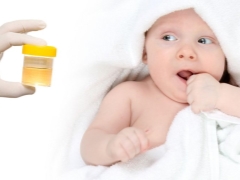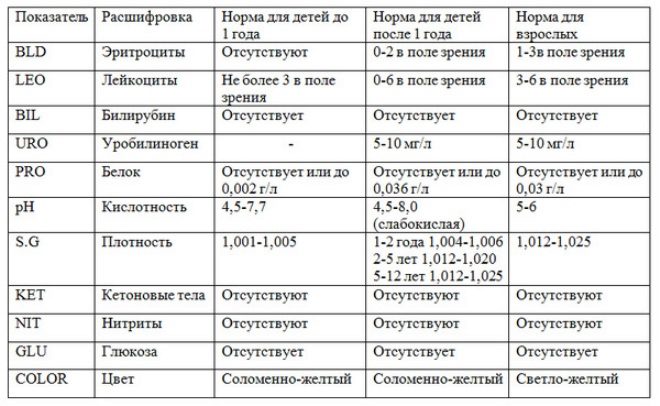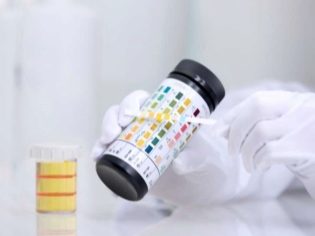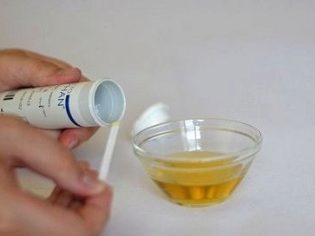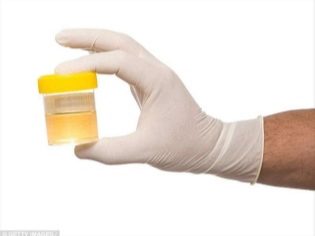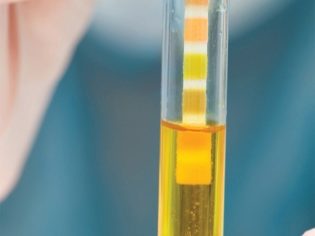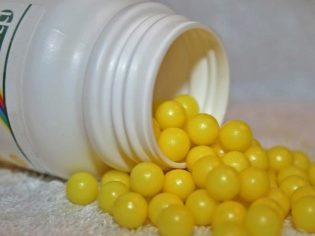Ascorbic acid in the urine of a child
Urinalysis helps to identify many health problems, so it is often prescribed in childhood. The urine examines the presence of bacteria, the amount of protein, the presence of salts and many other indicators. One of them is the level of ascorbic acid. Why do we need to determine the concentration of this vitamin in the urine and what to do if the analysis showed abnormalities?
Why and when is it determined?
Vitamin C is classified as a vital substance. It participates in oxidative reactions, collagen synthesis, iron absorption and other biochemical processes.
At the same time, such an acid is not formed in the body, but must be regularly supplied with food. Its many in black currants, citrus fruits, bell peppers, wild rose, kiwi and many other products.
Determine ascorbic acid in the urine of a child is important:
- Feeding infant babies cow's milk;
- When infectious diseases in infants;
- If you suspect scurvy - bleeding gums, formation of bruises on the skin, drowsiness, loss of strength, poor appetite and other disturbing symptoms;
- Burns;
- With the syndrome malabsorption;
- In case of violation liver work;
- When strong and frequent stress;
- With oncoprocess;
- With long treatment with infusions.
With all such problems, it is necessary to identify in time the shortage of vitamin C in order to correct this deficiency either by eating or taking vitamin supplements.
How do the analysis?
To determine ascorbic acid is required to collect all the urine, which the child will allocate for one day. For the collection used a special container. In order for the indicator not to be exceeded, at least 10 hours prior to the examination it is necessary to stop taking ascorbic acid tablets or injecting such a vitamin.
The analysis involves the use of special test strips that change color when interacting with vitamin C. The result is obtained within one minute. In addition, the level of ascorbic acid can be determined in the blood. For this analysis, venous blood is taken.
Very often, two such analyzes are given to children at once, in order to identify the problem.
Norm in children
The presence of ascorbic acid in the urine is normal. Per day, this compound is released in an amount of about 30 mg. If the level of this vitamin in the blood is additionally determined, then the rate will be from 4 to 20 µg / ml.
Causes of deviations from the norm
If the figure is lower or higher than normal, this may indicate dysfunction of the internal organs or problems with the intake and absorption of vitamin C.
Above normal
An excess of ascorbic acid in the urine studied is when:
- Kidney stones;
- Eating large amounts of vitamin C with food before taking the test;
- Disorders of ascorbic acid absorption in the body;
- Intake of drugs, the side effect of which is an enhanced excretion of vitamin C in urine.
Below normal
A decrease in the level of ascorbine or the complete absence of such a vitamin in the patient’s urine may indicate:
- Long strict diet;
- The use of large amounts of fluid;
- Taking diuretic drugs;
- Hypovitaminosis C;
- The presence of burns;
- Severe stress;
- Tumor process;
- Impaired function of the liver and other internal organs.
What to do?
The tactics of the doctor will depend on the result of the analysis. For example, if the pediatrician learns about the effect on the rate of changes in nutrition on the eve of the examination or taking any medications, the child will be asked to retake urine.When a small deviation from the norm is often recommended to correct the diet, including in the children's diet rich in vitamin C products.
If hypovitaminosis is detected, and ascorbic acid intake with food is not enough, the child will be prescribed pharmaceutical supplements with such an active element.
At the same time they are guided by age needs. A child under one year old should consume 30 mg of vitamin C, a baby 12-24 months old should take 40 mg per day, a child from 3 to 12 years old should take 45 mg daily, and a teenager should have at least 60 mg per day.
When hypovitaminosis or any diseases in which the requirements for ascorbic acid increase, children are given higher doses of such a vitamin compound. For example, babies aged from one to three are given 400 mg of vitamin C per day.
You will learn more about ascorbic acid in the following video.
